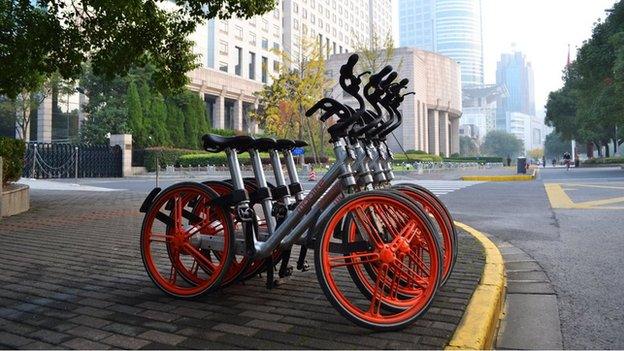Why the bicycle's future looks bright
- Published

French-born Pierre Lallement patented his "velocipede" in the US in 1866

One autumn day in 1865, two men sat in a tavern in Ansonia, Connecticut, calming their nerves with a few stiff drinks.
They had been riding a wagon down a nearby hill when they heard a blood-curdling scream from behind them. What appeared to be the devil himself - with the head of a man and the body of some unknown creature - was flying down the hill towards them, skimming low over the ground.
They whipped their horses and fled, while the devil plunged off the road and into a flooded ditch.
Imagine their fear when the devil himself then came over to introduce himself: the dark-haired Frenchman was bleeding and soaking wet. His name was Pierre Lallement.
The young mechanic had been in the United States for a few months, and had brought with him from France a machine of his own devising - a pedal-cranked, two wheeled construction he called a "velocipede". We would call it a bicycle.

Find out more

50 Things That Made the Modern Economy highlights the inventions, ideas and innovations that helped create the economic world.
It is broadcast on the BBC World Service. You can find more information about the programme's sources and listen to all the episodes online or subscribe to the programme podcast.

Monsieur Lallement was soon to patent his invention, which still lacked the gears and chain drive of a modern bicycle. It also lacked brakes - which was why he had plunged down the hill towards the waggoneers with such hellish speed.
His rather cumbersome model was soon superseded by the Penny Farthing, which was not the genteel vehicle we imagine through the sepia tint of nostalgia. Courtesy of the enormous front wheel, it was a racing machine - twice as fast as a velocipede.
It was ridden almost exclusively by fearless young men, perched on top of a five-foot wheel and prone to pitching forward at the slightest obstacle.
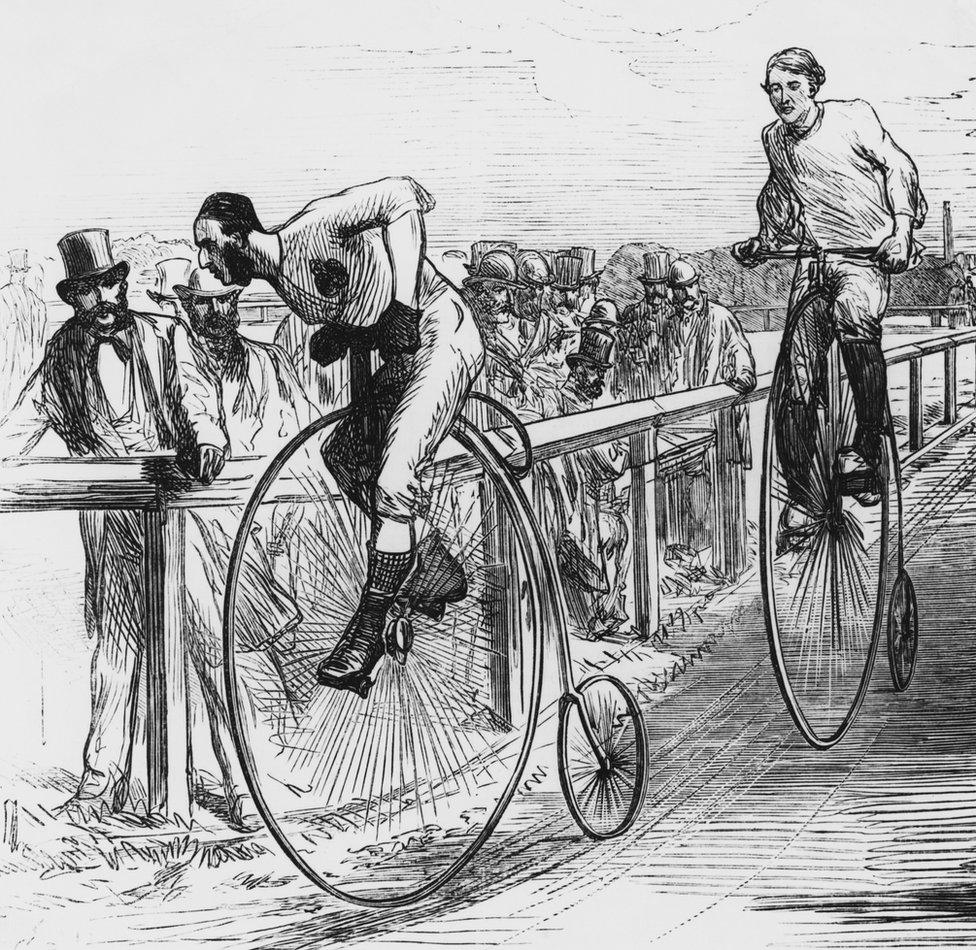
But the next technological step, the "safety bicycle", had much broader appeal. It looked much like modern bicycles do, with a chain drive, equally-sized wheels, and a diamond frame.
Speed came not from a gargantuan wheel, but from gears.
Safety bicycles could even be ridden in a dress.
Not that that worried Angeline Allen, who caused a sensation in 1893 by cycling around Newark, on the outskirts of New York City, without one.
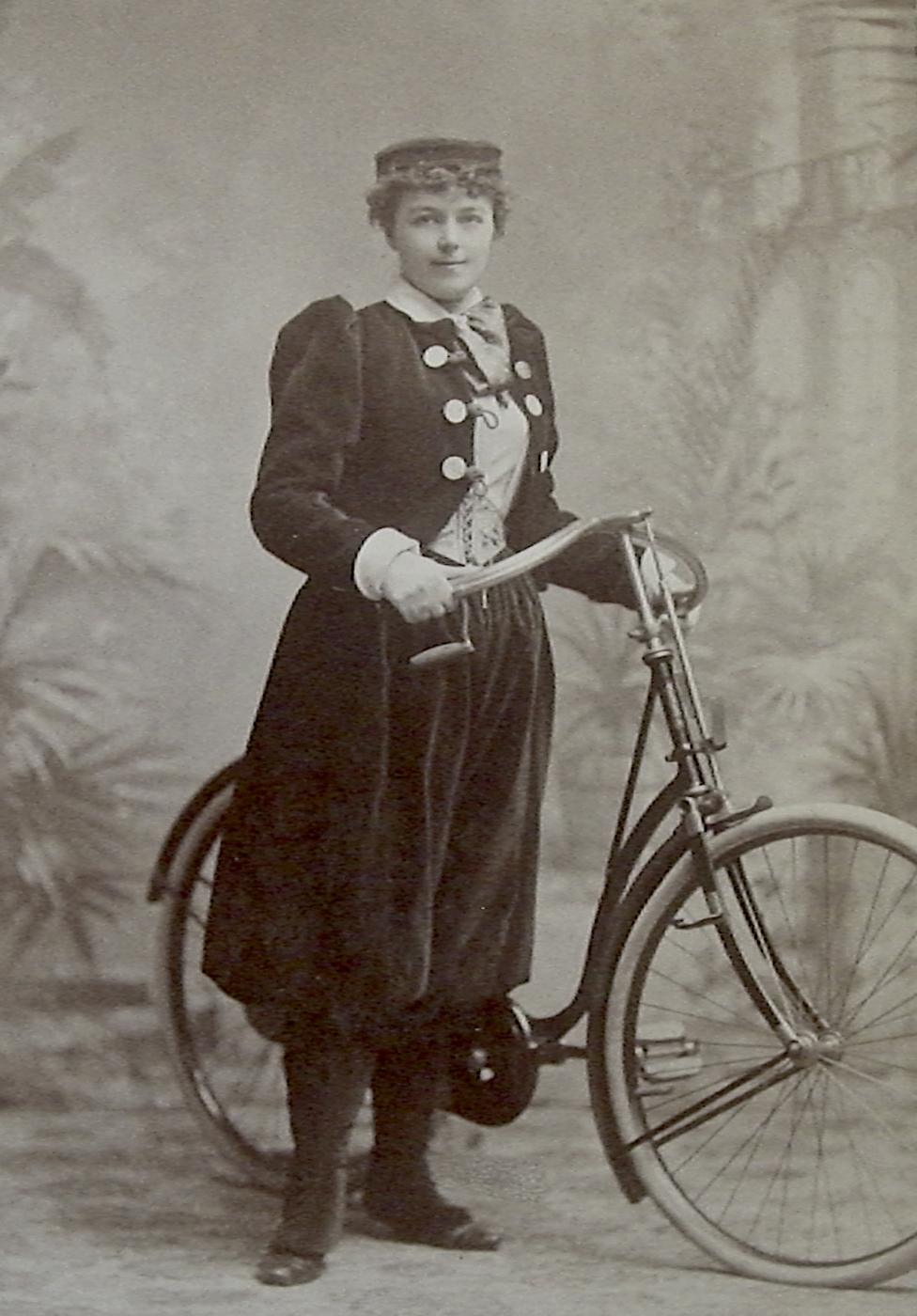
"She wore trousers!" bellowed the headline of a popular titillating men's magazine, adding that she was young, pretty, and divorced.
The bicycle was a liberating force for women. They needed to shed their whalebone girdles and hoop-reinforced skirts in favour of something simpler and more comfortable. They would ride without chaperones, too.
The forces of conservatism were alarmed, fretting that "immodest bicycling" would lead to masturbation, even prostitution. But these protests soon seemed laughable.
As cycling historian Margaret Guroff points out, nobody seemed concerned about what Ms Allen was doing - only what she was wearing while she did it. A woman seen alone in public on a safety bicycle seemed no scandal at all.
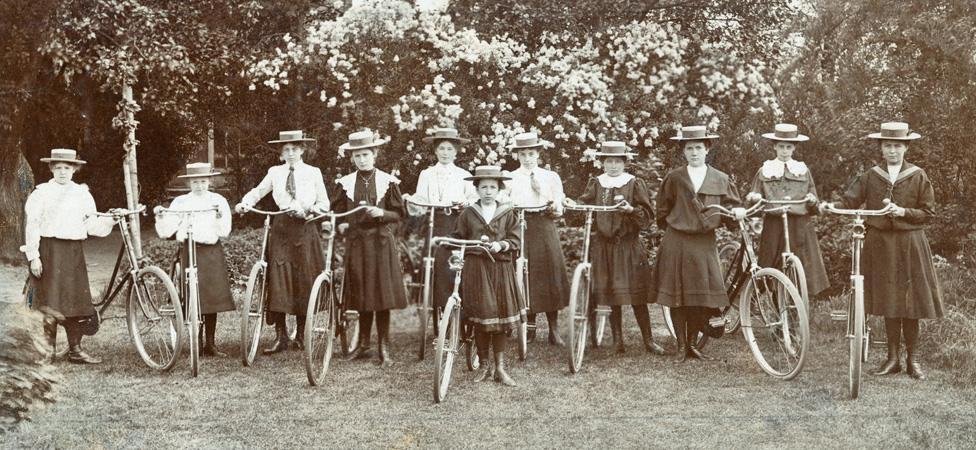
Three years later, the elderly Susan B Anthony, a women's rights activist for most of the 19th Century, declared that bicycling had "done more to emancipate woman than any one thing in the world".
The bicycle continues to empower young women today.
In 2006, the state government of Bihar, India, began to heavily subsidise the purchase of bicycles for teenage girls transferring to secondary school - the idea being that the bikes would allow girls to travel several miles to their lessons.
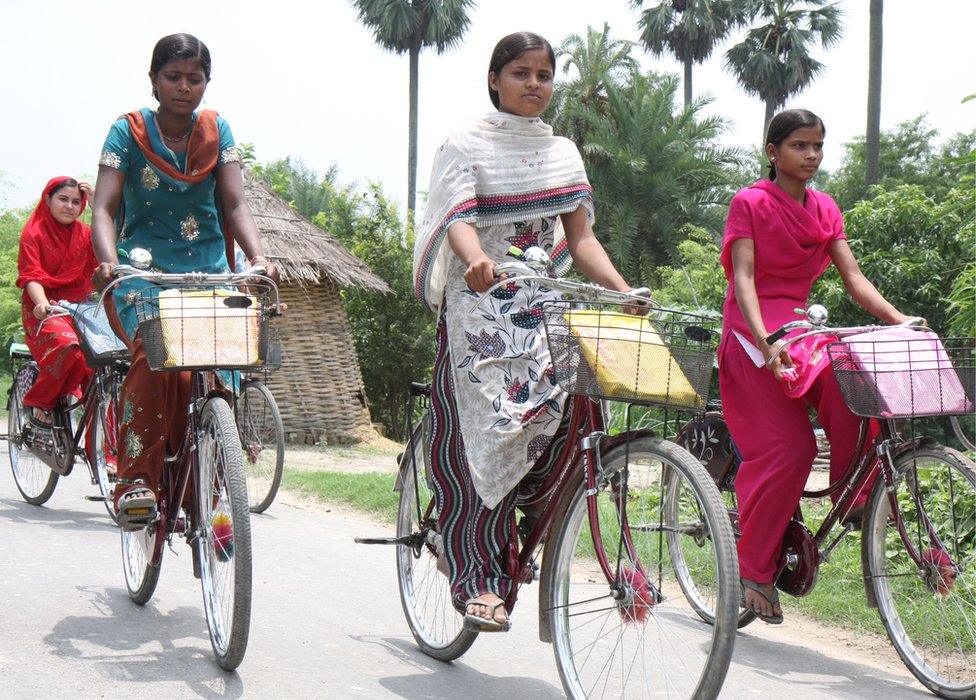
The programme seems to have worked, dramatically increasing the chances that girls will stick with secondary school.
Even in America, the bicycle is an inexpensive way to expand horizons: the basketball superstar LeBron James has founded a school in his hometown in Ohio that supplies a bike to every student.
He says that when he and his friends were on their bikes, they were free. "We felt like we were on top of the world."

LeBron James has so far given bicycles to all the children enrolled in his school
Yes, the bicycle has long been a liberating technology for the economically downtrodden. In its early days, it was much cheaper than a horse, yet offered the same range and freedom.
The bicycle ushered in a manufacturing revolution as well as a social one.
In the first half of the 19th Century, precision-engineered interchangeable parts were being used to make military-grade firearms for the US Army, at considerable expense. Interchangeability proved too costly, at first, for civilian factories to emulate fully.
It was the bicycle that served as the bridge between high-end military manufacture, and widespread mass production of complex products.

More things that made the modern economy:

Bicycle manufacturers developed simple, easily repeatable techniques - such as stamping cold sheet metal into new shapes - to keep costs low without sacrificing quality.
They also developed ball bearings, pneumatic tyres, differential gears and brakes.
Both the manufacturing techniques and these innovative components were embraced in due course by auto manufacturers such as Henry Ford.
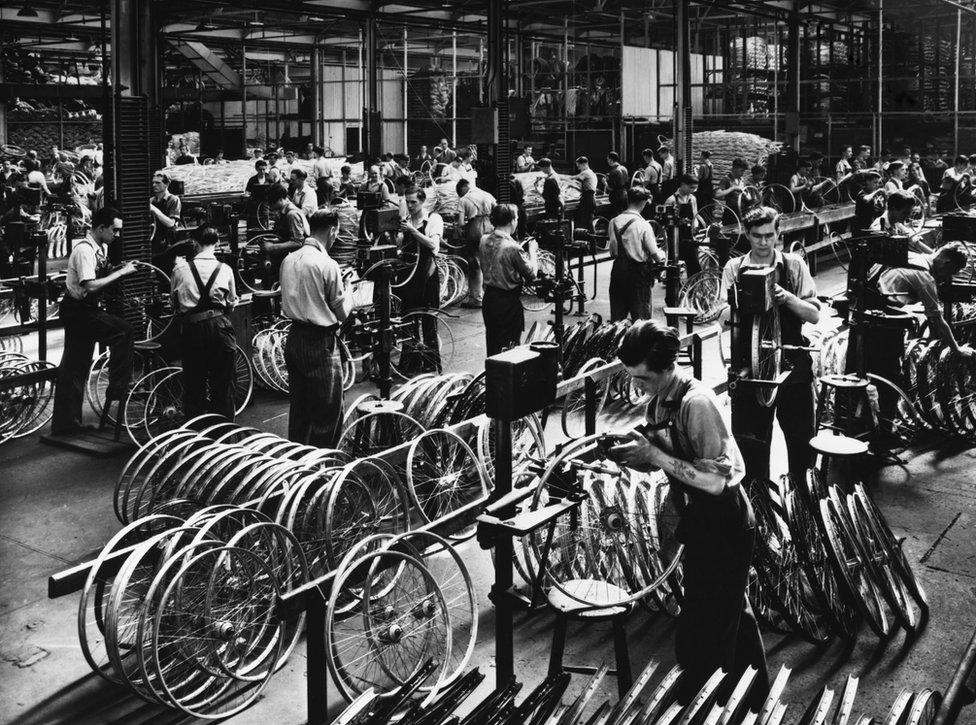
Many techniques developed by bicycle manufacturers were subsequently applied to car production
The first safety bicycle was made in 1885 at the Rover factory in Coventry, England.
It is no coincidence that Rover went on to become a major player in the car industry; the progression from making bikes to making cars was obvious.
The bicycle provided stepping stones for modernising Japanese industry, too.
The first step was the importing of Western bikes to Tokyo in around 1890. Then it became useful to establish bicycle repair shops. The next step was to begin making spares locally - not too much trouble for a skilled mechanic.
Only 10 years later, all the ingredients existed to make the bicycles in Tokyo itself.
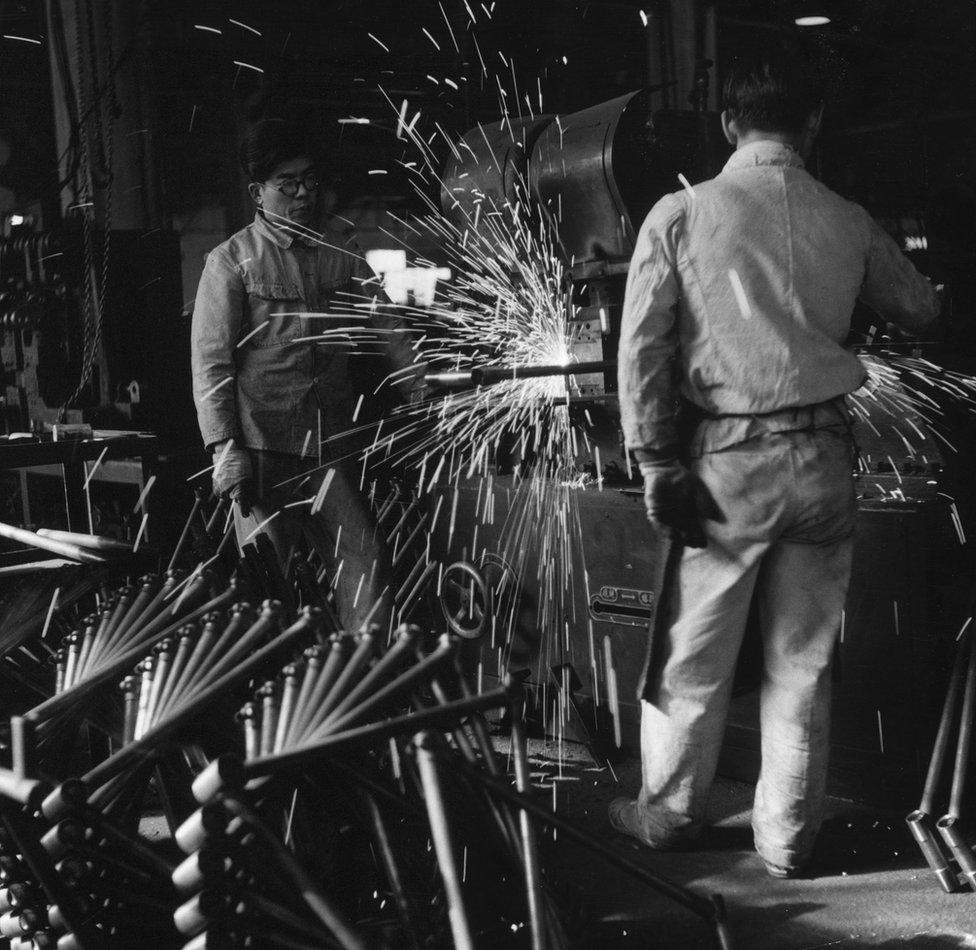
By the outbreak of World War Two, Japan was making more than a million bikes a year, masterminded by a new class of businessman.
It is tempting to view the bicycle as the technology of the past. The data shows otherwise.
Half a century ago, world production of bikes and cars was about the same - 20 million each, per year. Production of cars has since tripled, but production of bicycles has increased twice as fast again - to around 120 million a year.
And it is not absurd to suggest that bicycles are pointing the way yet again.
As we seem to stand on the brink of an age of self-driving cars, many people expect that the vehicle of the future will not be owned, but rented, with the click of a smartphone app.
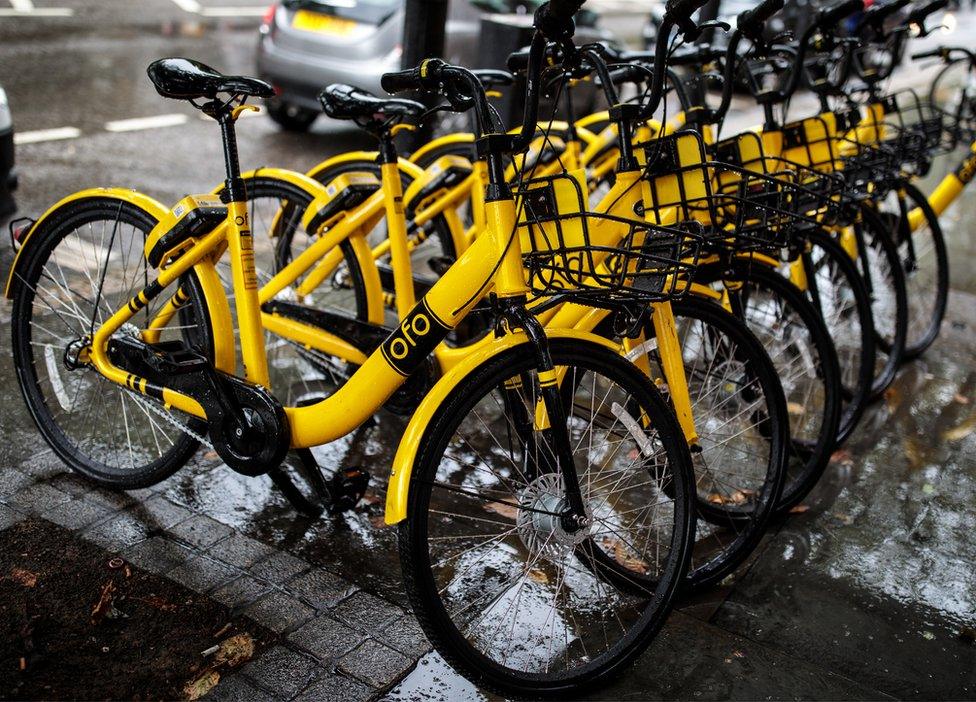
If so, the vehicle of the future is here: globally well over a thousand bike-share schemes and tens of millions of dockless, easy-to-rent bikes are now thought to be in circulation, with numbers growing fast. You can even hire battery-powered models.
Ride-sharing firm Uber has already announced that it plans to to focus more on its electric scooter and bike business, and less on cars.
Some companies have experienced teething problems with the business model. Large number of bikes have been stolen, vandalised or abandoned, leading firms to pull back from operating in certain cities.
However, the market seems set to grow, given that the bicycle is still often the quickest way to get around gridlocked areas.
Many cyclists are discouraged only by diesel fumes and by the prospect of, like Monsieur Lallement, crashing.
But if the next generation of automobile is a pollution-free electric model, driven by a cautious and considerate robot, it may be that the bicycle's popularity - just like Pierre Lallement on his downhill ride - is about to pick up speed.
The author writes the Financial Times's Undercover Economist column. 50 Things That Made the Modern Economy is broadcast on the BBC World Service. You can find more information about the programme's sources and listen to all the episodes online or subscribe to the programme podcast.
- Published27 March 2019

- Published27 August 2018
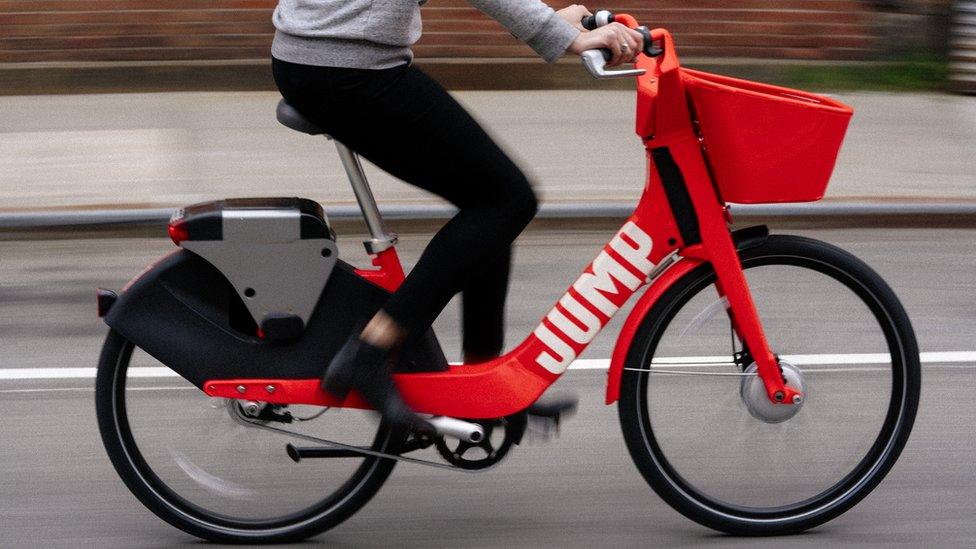
- Published17 June 2018
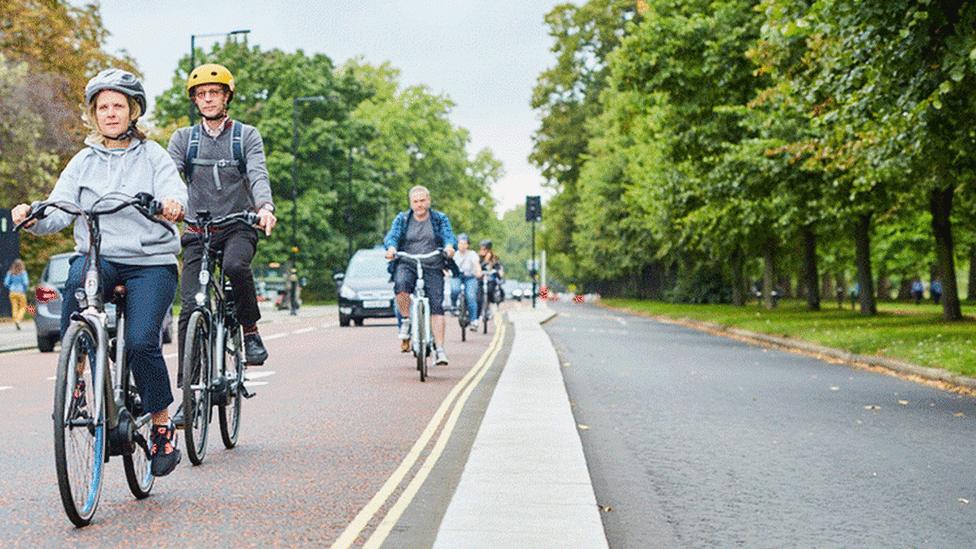
- Published11 May 2018

- Published13 June 2017
